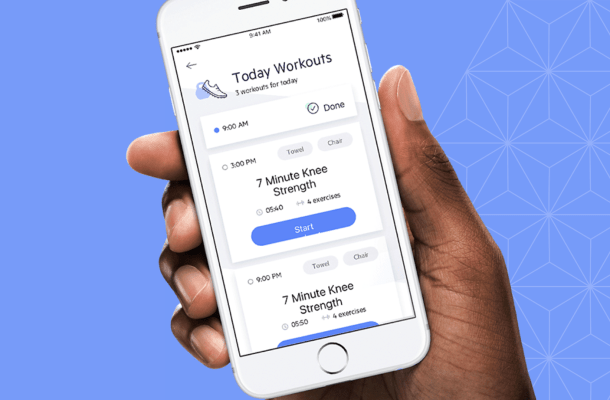If you’ve ever ended up with an injury, you’ve probably gone through an overly long process to eventually end up in a physical therapist’s office: you go to a doctor’s office, they take a look, hand you a slip of paper, and refer you off to a PT office (that might not even still exist).
And that’s just to get to the point of actually starting the workouts and processes you need to heal and start better managing your pain from an injury or a chronic problem. So Dan Rubinstein and Cameron Marlow, who’ve dealt with it before and wanted to work on a healthcare startup, decided to start Physera to strip that process down to the basics that patients dealing with pain actually need: getting to the exercises and routines and making sure they keep doing them. The startup today said it has raised $2.8 million from Innovation Endeavors, Lux Capital, Expa, Slow Ventures, and iD Ventures.
“We wanted to create a much tighter connection [with a physical therapist],” Rubinstein said. “If you’re really seeing PT as a primary treatment, between visits the provider has no info on what’s going on. There’s a lot of evidence that shows people don’t adhere to their treatment plan when they’re out of the PT’s office. We saw a nice angle to integrate these problems. Both collecting data about what patients are doing outside the office increases the visibility to what the PT can do to act and adjust their program. It also gives a reason for individuals to adhere to their exercises.”
The front-facing consumer part of it is an app that patients that have been prescribed PT open up to see the workouts they need to complete and collects data on how successful those routines were in helping them mitigate pain over time. It’s the second part of that process that’s designed to help the physical therapists on the network get a better sense of how to target their recovery and maintenance plans with patients, which they coordinate remotely. The whole process starts with a video visit and then continues through the recovery period as the specialist sees photos or video of the workouts and adjusts accordingly.”
“A big component is what signals and ways can we optimize the provider’s interface to make them effective and efficient,” Rubinstein said. “A lot is in the way we prescribe exercises and know who to follow up with. A big component is making sure our providers are reaching out to patients and understanding what kinds of patients and behavioral signals can influence those engagements.”
Physera primarily works with self-insured employers and large health plans that could see the benefit of keeping an employee base healthy and out of the doctor’s office. So, instead of racking up bills for the provider from visits or prescriptions, that insurer can end up saving money in the long run and theoretically convince employees to get on a program without a fee. The employer then pays Physera as you’d expect for that kind of a relationship.
The app then collects data on the outcomes of the program and helps figure out what each patient needs in order to heal and prevent getting injured going forward. Physical therapy is as much about mitigating the pain of injuries as it is building up strength and let what’s messed up have an opportunity to fully recover (like a knee injury, for example). But each patient might have a different experience and the physical therapist needs to know if a certain exercise is causing pain — and figure out whether their form is correct or if the exercise is just too strenuous.
I’ve definitely had situations with regular knee injuries, and what tends to happen is the exercises that a physical therapist prescribes end up as just part of a regular exercise routine. In addition to building strength, those exercises help prevent injury and they’re easy to rope into your routine. So it would make sense that a service like Physera goes beyond just physical therapy into a kind of continuous workout program that’s designed to keep employees from getting injured and ending up at a doctor’s office over and over again.
While Physera primarily works with insurers, it seems natural that it could end up as a consumer application at some point that isn’t attached to an insurance plan. If Physera is able to lower the cost overhead of physical therapy — like much of the promise of asynchronous services — then they could create an experience that would be worth paying for out of pocket. That’s not on the direct roadmap right now, but it’s not out of the question, Rubinstein said
“We’re very open to [operating to direct consumer],” Rubinstein said. “We see consumers don’t like to spend money on healthcare on things that insurance covers. Most of our monetization is focused on those bearing risk. Compared to an average cost of treatment, our program is cost-effective. I could see in a year or two that people would opt to choose us over traditional PT.”
To be sure, there are tons of apps out there that are supposed to help keep you working out and keep up with your physical therapy exercises. And injury management and prevention is something that could easily end up in broader fitness applications, especially ones with networks that create a positive feedback loop from other users in addition to PT specialists. Physera’s hope is that by working with insurers, they’ll be able to get as many people on the plan as possible because of the low barrier to entry and a connection with highly effective physical therapists around the world.
